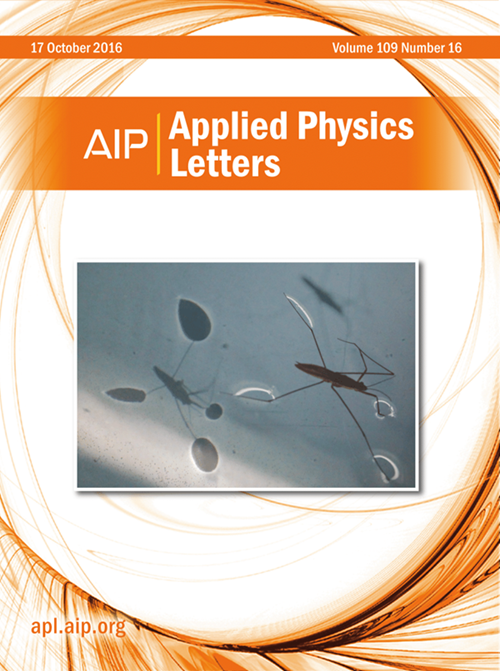Mechanically tunable Schottky diodes based on silicon microstructure arrays via flexoelectricity
IF 3.5
2区 物理与天体物理
Q2 PHYSICS, APPLIED
引用次数: 0
Abstract
Silicon is the most widely used semiconductor material, yet its centrosymmetric crystal structure makes seamless interaction between mechanical stimuli and electronic functionality challenging. Flexoelectricity—an electromechanical coupling inherent in all types of crystals—offers a solution by leveraging strain gradient-induced polarization to modulate electronic behavior. In this study, silicon microfabrication techniques are integrated with flexoelectricity to realize tunable Schottky diodes. Microstructure arrays fabricated on p-type silicon generate substantial strain gradients under macroscopic compression without relying on nanoscale probes. The strain gradients induce polarization at the metal–semiconductor interface, modulating the Schottky barrier height and thereby enabling mechanical tuning of the diode's electrical properties. The results herein demonstrate that macroscopic loading can effectively regulate the current–voltage (I–V) characteristics. This work bridges the gap between the flexoelectric effect and practical semiconductor applications, paving the way for next-generation smart materials and adaptive electronic devices.基于柔性电硅微结构阵列的机械可调谐肖特基二极管
硅是应用最广泛的半导体材料,但其中心对称的晶体结构使得机械刺激和电子功能之间的无缝交互具有挑战性。柔性电-所有类型晶体中固有的机电耦合-通过利用应变梯度诱导极化来调制电子行为提供了一种解决方案。在这项研究中,硅微加工技术与柔性电相结合,实现可调谐肖特基二极管。在p型硅上制备的微结构阵列在宏观压缩下产生大量的应变梯度,而不依赖于纳米探针。应变梯度在金属-半导体界面处诱导极化,调制肖特基势垒高度,从而实现对二极管电性能的机械调谐。研究结果表明,宏观加载能有效调节电流-电压特性。这项工作弥合了柔性电效应和实际半导体应用之间的差距,为下一代智能材料和自适应电子设备铺平了道路。
本文章由计算机程序翻译,如有差异,请以英文原文为准。
求助全文
约1分钟内获得全文
求助全文
来源期刊

Applied Physics Letters
物理-物理:应用
CiteScore
6.40
自引率
10.00%
发文量
1821
审稿时长
1.6 months
期刊介绍:
Applied Physics Letters (APL) features concise, up-to-date reports on significant new findings in applied physics. Emphasizing rapid dissemination of key data and new physical insights, APL offers prompt publication of new experimental and theoretical papers reporting applications of physics phenomena to all branches of science, engineering, and modern technology.
In addition to regular articles, the journal also publishes invited Fast Track, Perspectives, and in-depth Editorials which report on cutting-edge areas in applied physics.
APL Perspectives are forward-looking invited letters which highlight recent developments or discoveries. Emphasis is placed on very recent developments, potentially disruptive technologies, open questions and possible solutions. They also include a mini-roadmap detailing where the community should direct efforts in order for the phenomena to be viable for application and the challenges associated with meeting that performance threshold. Perspectives are characterized by personal viewpoints and opinions of recognized experts in the field.
Fast Track articles are invited original research articles that report results that are particularly novel and important or provide a significant advancement in an emerging field. Because of the urgency and scientific importance of the work, the peer review process is accelerated. If, during the review process, it becomes apparent that the paper does not meet the Fast Track criterion, it is returned to a normal track.
 求助内容:
求助内容: 应助结果提醒方式:
应助结果提醒方式:


